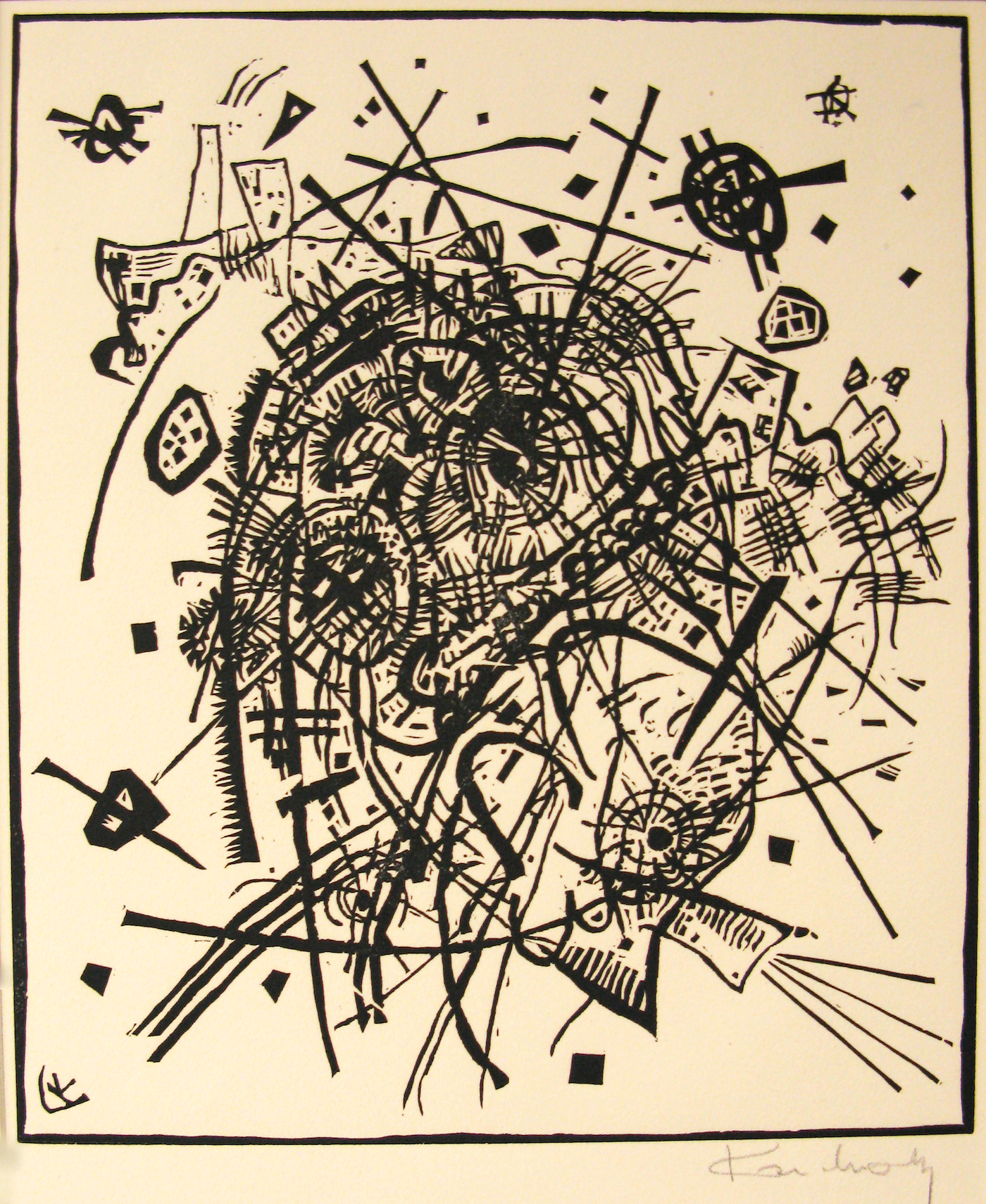A Rare Suite of Kandinsky’s Experimental Prints Goes on View
A Rare Suite of Kandinsky’s Experimental Prints Goes on View

Wassily Kandinsky, “Kleine Welten VI” (1922) (all images courtesy Springfield Museums)
In 1895, after deciding to turn from a career in academic law to art-making, Wassily Kandinsky was working as the artistic director of a print shop in Moscow. There, he designed covers for chocolate boxes while gaining early exposure to printmaking traditions. It was only until two years later that he first started working with the medium himself, creating many etchings, woodcuts, and lithographs. A rare portfolio of 12 works he produced in 1922 showcases his achievements with all these techniques, offering a taste of Kandinsky’s broad skills and revealing his eagerness for experimentation. Titled Kleine Welten (Small Worlds), these works contain the same denseness in composition and harmony of form so present in his more famous abstract paintings.
Prints are convenient to reproduce and disseminate, but complete sets of Kleine Welten are rare and in the possession of only a handful of public museums. Among that handful is the Springfield Museums’ Michele and Donald D’Amour Museum of Fine Arts, which is currently hosting a smallexhibition in its Collins Print Gallery that spotlights these insightful works. Like Kandinsky’s renowned paintings, these reveal no reference to the natural world, instead swirling with shapes of all sizes, often integrated into dynamic clutter that seems frozen in mid-explosion.
“As evident in their titles, each image represents an independent microcosm, or ‘small world’ — a reflection of Kandinsky’s view of the world as a self-contained cosmic entity consisting of countless independent, enclosed elements,” curator Julia Courtney told Hyperallergic. “He used each method to its best advantage in rendering his abstract compositions, creating a set of prints that showcases the unique visual features of each print-making style.”
Etching, for instance, allowed for the rendering of fine and precise lines; woodcut simplified forms but gave works a certain richness of texture — although with limiting palette; and lithography, combining colors and a range of marks, yielded images that most closely recall paintings. Kandinsky’s formal experiments with reductive woodcuts, Courtney said, particularly helped pave the road towards abstraction. In Kleine Welten, each print measures just about 10 by 8 inches, but many burst with frenetic energy and present within their small, flat planes an extraordinary dimensionality.
Kandinsky published the suite the same year he started teaching at the Bauhaus and after his most prolific printmaking period. Within that decade between 1900 and 1911 — the year he founded Der Blaue Reiter with Franz Marc — he produced nearly two-thirds of the 200 prints he’s known to have created over his lifetime. The dizzying and varying sights in Kleine Welten‘s 12 capture how Kandinsky saw the potential for prolonged experimentation within centuries-old techniques of printmaking.

Wassily Kandinsky, “Kleine Welten II” (1922)

Wassily Kandinsky, “Kleine Welten V” (1922)

Wassily Kandinsky, “Kleine Welten VIII” (1922)

Wassily Kandinsky, “Kleine Welten I” (1922)

Wassily Kandinsky, “Kleine Welten IX” (1922)
Kleine Welten (Small Worlds) continues at the Springfield Museums (21 Edwards St, Springfield, Mass.) through January 15, 2017

Comments
Post a Comment